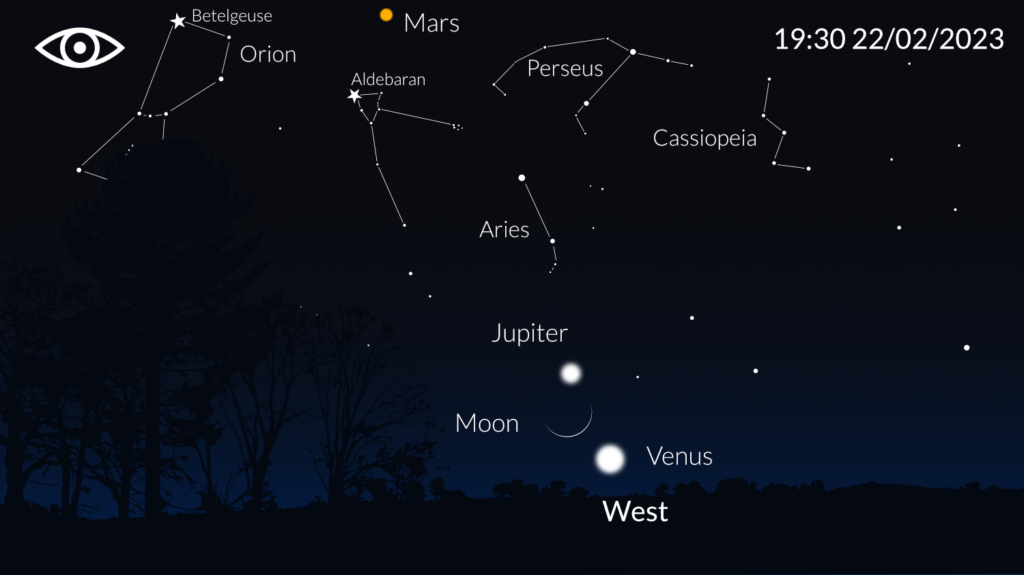This month’s Eyes on the Night Sky will feature the best night sky objects to discover with binoculars, telescopes, or just the eyes.
Make the most of the dark, early evenings, wrap up warm, bring a favourite hot drink and get outside.

February Constellations
There are 88 officially recognised constellations in the night sky: 36 are in the northern hemisphere and 52 are in the south. These change over the year like a celestial parade as the Earth travels around the Sun; due to our latitude, constellations higher up in the sky, such as Cassiopeia, Draco and Ursa Major never set, whilst other constellations come and go with the seasons.
This month, the constellations of Leo, Cancer, Boötes rise in the East whilst the winter constellations such as Taurus, Gemini, Orion and Auriga march westwards as the evening progresses. You can download the printable constellation map from here (credit: Dominic Ford, author of the excellent in-the-sky.org)
The Full Moon falls on 5th February and the New Moon on 20th February.

A Conjunction
On 22nd February, the nearly three-day old Moon will emerge after sun sets with Venus and Jupiter close by. This conjunction will look especially stunning when earthshine appears on the darker face of the moon – the Earth’s light reflected, which can be seen during the twilight. Take this opportunity to study these objects with binoculars and try to spot Jupiter’s Moons that surround the planet.

You should be able to spot Io, Ganymede and Callisto, three of 80 Moons that orbit this mighty gas giant.

Beehive Cluster M44
RA 8h 40m 24s | Dec +19° 59′ 0″
For binocular users, an easy target is the beautiful Beehive Cluster in the constellation of Cancer. Also known as Messier 44, it is 600 light years from us and is visible to the unaided eye.

A decent size binocular will reveal a sharp and pretty swarm of 20 stars but this open cluster contains up to 1,000 stars; most of which are too faint to be seen..

Messier 3 Globular Cluster
RA 13h 42m 11.62s | Dec +28° 22′ 38.2″
For telescopes, Messier 3 is a lovely gem-studded globular cluster to study with telescopes four inches of aperture and above. As always with such distant objects, a dark sky is a must to study this object. The tight ball of stars begins to resolve fully with larger apertures and looks spectacular through 12-inch telescopes.

No wonder it is a sight to behold as this globular cluster contains up to half a million stars. Located around 34,000 light years from Earth, it is thought to be one of the oldest objects in the Universe. Use averted vision to tease out more stars in its core.


